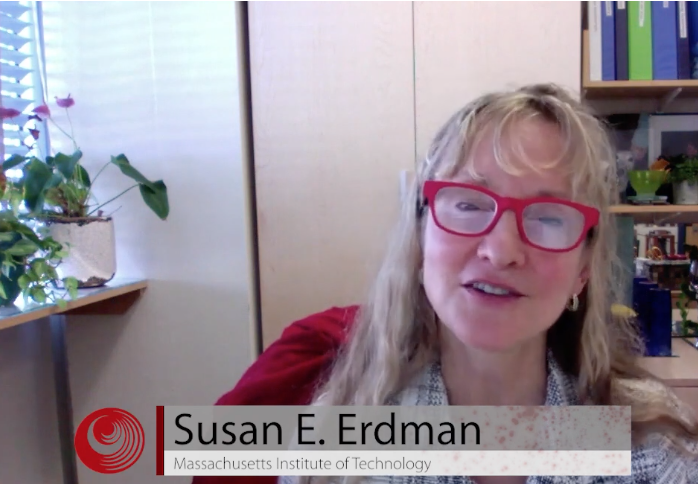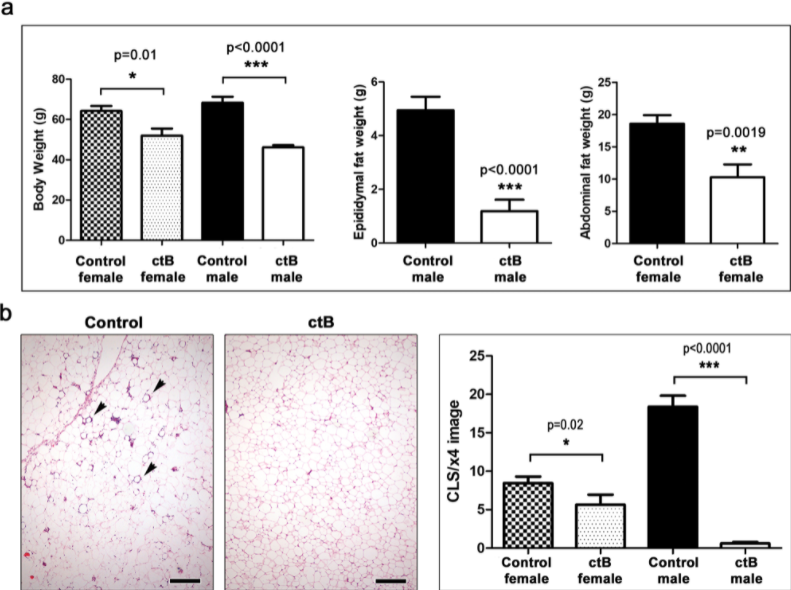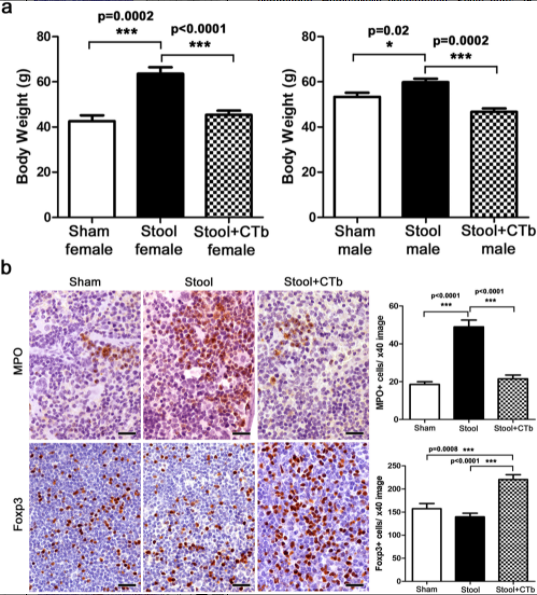Dr. Susan Erdman from Massachusetts Institute of Technology (MIT) discusses the 2019 research paper she co-authored, entitled, “Consuming cholera toxin counteracts age-associated obesity.”
Behind the Study is a series of transcribed videos from researchers elaborating on their oncology-focused studies published by Oncotarget. Visit the Oncotarget YouTube channel for more insights from outstanding authors.
—
Good morning. This is Susan Erdman. I’m a researcher at Massachusetts Institute of Technology, MIT, and our team does research on the factors that contribute to cancer in the bigger picture of things. We began doing this work, looking at connections between the gut microbiome and cancer, and discovered that the gut microbes and inflammatory processes that are related to how the body interacts with those microbes are important drivers in not only local cancer events, but in distant cancer events.
And so over the interceding 20 years or so, our team has been working on different elements of trying to put together the clues to help us understand how cancer processes throughout the body might be influenced by simple interactions with our microbial passengers in the gut. So as part of all of those studies, we became really interested in the inflammatory cells that interact with the microbes in the gut and how those inflammatory cells might set up short-term or long-term patterns throughout the body that might cultivate cancer or suppress cancer, inhibit the development of cancer.
And in the process of doing those studies, we made some other interesting discoveries, and those were that many of these effects, which I’ll go on to detail, many of these effects aren’t limited to just influence on cancer processes, but they’re inextricably linked with other axes in our body, even extending to a microbe immune gut-brain axis. All of those players control not only risks for cancer, but also underlying risks for obesity, chronic inflammatory diseases, things like our mental health and even our perspectives about living. So it’s a very sort of far reaching concept that these microbes might be influencing all these things throughout the body.
As we were doing these studies in cancer, we were looking for sort of good guys and bad guys, things we could do to either change the microbial balance within the gut or to change how the inflammatory cells respond to the microbial balance in the gut. One of my collaborators, his name is Theofilos Poutahidis in Greece, who used to work here at MIT in our laboratory, came upon a very, very interesting idea to use a toxic factor to stimulate a response in the body that might help inhibit cancer.
It’s actually part of a much bigger hypothetical framework that the immune cells in the body, when continually stimulated, develop patterns of response that allow us to maintain balance or homeostasis. Those involve innate immune players and also adaptive immune players that are cultivated over time. So if you were to be exposed to something very, very early in life, you might retain immunological memories of that exposure that cause later exposures to be much less damaging to the body as a whole. This concept of sort of minimizing collateral damage from every environmental interaction, so a really healthy immune system can respond to day-to-day challenges very meaningfully and then has minimal collateral damage. It structures itself in a way that keeps the body healthy as a whole.
We’ve gone on to untangle the threads of a lot of how that happens in terms of ability to repair wounds and so forth. But back to the cancer story. Theofilos became very interested in this idea that we could take a sterile and relatively benign subset of the cholera organism and stimulate a host with that organism and create this same effect that I was just describing, and that effect is to simultaneously stimulate and at the same extent, bridle the immune system in ways that would help keep us healthy. This is a concept then that extends to the current manuscript, the manuscript that we’re talking about in connection with maintaining a slender body form and inhibiting the development of obesity over time, but just a little more background information about this story.
It sounds kind of like a crazy concept to take a microbial toxin, in particular one that large portions of the world are terrified about, the cholera organism, and somehow try to harness that for good. We were putting something that everyone traditionally thinks of as very bad into the category of potentially good for cancer, and part of the secret to that is retaining the immune stimulatory properties that give us the very best elements of the benefits of tickling the immune system in this way, and then also identifying subsets or fractions that are relatively benign. Even compromised hosts could partake of the benefits of this process, and so there’s a small subset of things that are available. One of them is purified elements of cholera toxin, and so cholera toxin has subsets A and B. One of them causes horrible diarrhea and could be very deadly.
These are, like I said, widely recognized as cholera diarrhea, things that travelers work very hard to avoid. Then there’s a subunit B of the toxin that’s a carrier for subunit A to get inside the cells to release this horrible fluid purging diarrhea process. Our focus in the studies was to use the properties of cholera toxin B, so another B only the benign one, the one that in and of itself doesn’t have toxic properties. Theofilos went on to publish a paper, looking at purified cholera toxins and their potential in mouse model systems, and one of the things about mouse model systems … first of all, mice aren’t little tiny people, but they have a lot of similarities in human gut processes, for example … so human guts are set up a certain way, very different from a cow, very different from a horse or a rabbit, but actually pretty similar to mice.
So there are some similarities in the way that the guts of mice function and the potential to take gut microbes or toxins and transplant them into mice and get some sense of how they might respond in humans. But those things have very little relevancy, unless there are immediately translatable counterparts in humans that would directly apply. For those travelers who are afraid of going from a place where they have no exposure to cholera and then enter a place where they’re at risk for cholera or for those unfortunate people who live in areas where cholera is commonplace, and they’re very afraid of it, there are vaccines developed that are based on exposure to these toxins and making the body familiar with these toxins. There’s an enormous precedent in human subjects for using these vaccines for other purposes, mostly the prevention of cholera diarrhea, and often in the context of traveling to areas where cholera might be common Vibrio cholerae, the organism that causes cholera, be common.
And these travelers come from areas where they’ve never seen these organisms before. The vaccine gets the body’s immune system primed to be able to be balanced and protect against the diarrhea. As a result, there are many countries, more than 60 worldwide, who take vaccines for cholera. Those vaccines are approved in oral vaccine form, and they’re essentially feeding some combination of these toxins and potentially some component of cholera organisms. We were less interested in protecting from cholera organisms per say, and more interested in using the concept of tickling the immune system to be primed to keep an individual healthy. So I think you understand where we’re going with this. These vaccines in people, some of them in the form of just purified toxin, those vaccines are given very widely to individuals all over the world, even pregnant women and even young children.
They are touted in some situations as a remedy for infant diarrhea conditions, so there’s this enormous precedent in the scientific and medical literature for humans to be able to take these formulations safely and be able to take them with healthful outcomes. What we were doing was taking that concept and super imposing it on top of the mouse model in Theofilos’s studies, well, which I’m a collaborator on, but he’s really the primary lab that was driving that. In Theofilos’s studies, they were specifically looking at cancer. In the studies that we were doing in the purposes of the current manuscript, we originally started looking at cancer and discovered in the process a much far-reaching concept that other inflammatory processes like the development of a chronic obesity syndrome, where there’s chronic smoldering inflammation in abdominal fat, that that same process could be inhibited simply by the feeding of this cholera toxin vaccines.
So while what we’re doing in mice isn’t exactly mimicking the human populations, it’s similar in many ways. We take younger animals and we introduce them to an oral dosing, very similar to how humans would take an oral vaccination before they travel in multiple doses in mice, just the same way that they do in humans. Then we followed those animals over a period of time. What we found was at first to our surprise and later to our scientific joy, scientific and medical joy, that these animals remained very slender over their lifetimes and had fewer demonstrations of the chronic inflammatory, smoldering inflammatory process, that contributes to the development of particularly abdominal fat in mice. So the paper, the current paper, the paper that we’re discussing, focuses on that management of age-associated obesity in the setting of simply feeding, some sterile purified form of cholera toxin B, the fraction that would normally serve only as a carrier and in and of itself has no pathogenic potential in most host settings, but has the potential to stimulate the immune system in ways that might create this balance.
One of the sequelae, really interesting sequelae of that balance is this inhibition of body fat accumulation in animals that were all peers. There were controls at nearly every level. They had ad libitum exposure to the same diets and everything that would give us reassurances that this concept has potential to translate into human subjects. We found interesting things in the paper that it did seem that it depended upon immune cell factors, which it’s too expansive of a topic to go into a lot of detail here, but it was cells of the immune system that were stimulated by the cholera toxin. We think that’s not in isolation, and in fact involves a combination of a neural network in the gut and maybe even a gut brain axis. And then these substantial immune sequelae that go on to support good health. We found that if you feed it earlier in life, that it has a more pronounced effect than if you feed it later in life.
But the bottom line is in a world where everyone is struggling not only to prevent cancer, but also to lower the likelihood of obesity associated with modern living as people age, that this may be a way to very, very early in life in the same way that you might vaccinate for many other things to stimulate the immune system to sort of recreate what the body really needs in terms of a diverse immune stimulation in order, or a substantial immune stimulation, in order to develop a healthy immune system.
So what would we envision doing with this? Well, there are lots of things that we would envision doing in this. We don’t right now know whether or not feeding children this vaccine, which is happening in other countries routinely that those children go on to be more slender. We’re hoping within our own program of outreach to our collaborators, to do experiments where we can begin to study the data from individuals that got these cholera vaccines very young in life and see whether they have less abdominal body fat gain over time when compared with their peers who were raised in similar circumstances, but did not take the vaccine as a young person.
Because we saw benefits in older individual animals, we could examine that same thing in a less, a retrospective in a more prospective kind of way, looking at the potential of these vaccines, coupled with … you could be very creative with it and couple them with microbial cocktails of all kinds, and then determine whether or not you could recreate that slenderizing effect. So that’s the essence of the paper and the exciting possibilities for where we think this is going. In an industrialized world, that’s plagued with people unable to control body fat gain, and how many diverse other diseases are associated with this excess body fat gain, particularly abdominal fat that has this really pronounced inflammatory component. That is what was so effectively targeted in our mouse models by simply giving them an oral vaccination early in life. So that concept is tremendously appealing from an epidemiological perspective if we were to have data from human subjects who substantiate it.
This work would not have been possible without a grant from NIH NIDDK, and they have a metabolic mouse phenotyping program. We had gotten a sub award that was specifically targeting the ability to harness the microbiome to counteract obesity, so it was with that generous funding that we were able to do these studies. It was not completely unexpected, but serendipitous that we found these very slender, older mice, very healthy, very slender, older mice in a subset of animals that had been treated with the cholera toxin, an effect we did not see in their untreated peers that really led us to go back and study that in more detail. And I’m hoping it’s unveiled something tremendously interesting with a lot of potential for societal wellness.
Thank you very much.
Click here to read the full study published by Oncotarget.
ONCOTARGET VIDEOS: YouTube | LabTube | Oncotarget.com
—
Oncotarget is a unique platform designed to house scientific studies in a journal format that is available for anyone to read without a paywall making access more difficult. This means information that has the potential to benefit our societies from the inside out can be shared with friends, neighbors, colleagues, and other researchers, far and wide.
For media inquiries, please contact media@impactjournals.com.



